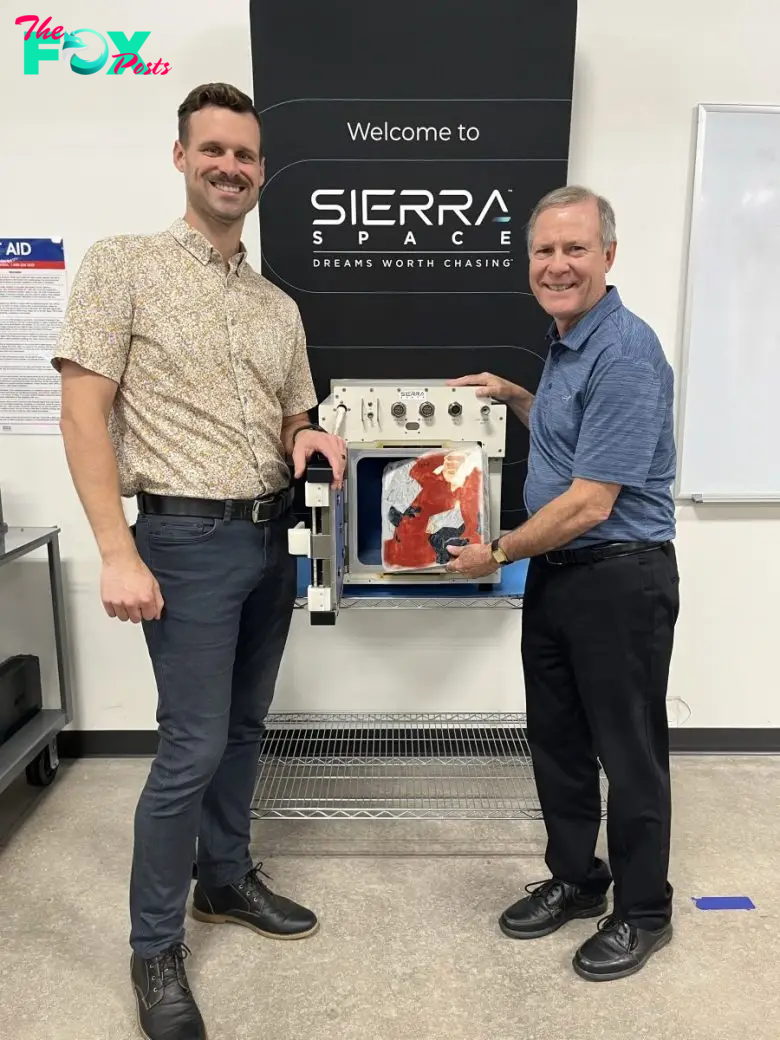Technology
Colorado company is building its own WALL-E as it reimagines trash disposal, recycling in outer space
Space may be the final frontier but even NASA has a “leave no trace” mentality when it comes to camping in the cosmos.
The space agency recently approved the next stage of Sierra Space’s trash compactor that aims to cut down on garbage on the International Space Station. If all goes as planned, the Louisville space company’s contraption will board the ISS in 2026 to help reduce the volume of trash stored on the station and potentially find new uses for the waste.
NASA’s approach to trash has been years in the making. Space debris from broken satellites or other inactive human-made objects tends to receive more attention when it comes to cosmic clutter. And that’s still a work in progress that other companies and researchers are trying to resolve. But NASA also doesn’t want to just dump space station waste into space, though they’ve tried shooting trash bags from the space station to burn up in the Earth’s atmosphere. The current disposal method is for trash to hitch a ride and burn up with the next expendable cargo ship.

Sierra’s compactor could really change things, and the company aims to go beyond the space station mission by adding reclamation and recycling. The contraption compresses everyday trash, like used cleaning wipes, plastic packaging, food leftovers and other raw garbage, into solid square tiles — a 75% reduction in volume. Water and gases are removed for later reclamation. The tiles are easier to store on board and could someday be used as an extra layer of radiation protection for space habitats on the moon or Mars.
“Part of the goal of this is exploration missions,” said John Wetzel, program manager for Sierra’s Trash Compaction and Processing System, or TCPS. “It becomes really critical when you’re heading to Mars for a couple of years to store that trash. This is a 4-to-1 compression ratio so it’s a lot smaller and then you can recover the water, which is really important when you go on a long-duration mission. We’re also looking at using this not only on the space station but future stations in orbit.”
Meet the TCPS
TCPS doesn’t quite roll off the tongue like WALL-E, Disney’s animated trash-compactor. But they have similar roles: cleaning up and compacting human messes. TCPS, of course, is real. So is the compacted trash, which is converted into stackable, 11-inch square tiles that are dry and odorless. Depending on the type of trash being compacted, the tiles can be an inch or more thick.
“We’ve got some sitting right here next to us that are 10 years old,” said Joe Klopotic, a senior mechanical engineer who works with Wetzel at Sierra’s Wisconsin office. “And they don’t smell.”

According to data from NASA, astronauts living on the space station produce an average of 2.4 pounds of trash per day. By comparison, the average Coloradan is somewhere in the realm of 6.4 pounds per person every day. So, astronauts are ahead of the earthbound in trying to be more mindful about waste and what it means when you live 250 miles from Earth.
Wetzel said he was a little surprised to hear how space station astronauts deal with everyday trash and get rid of it through the Northrop Grumman’s Cygnus cargo ship. (Sierra will have its own disposable vehicle next year when its DreamChaser launches with the Shooting Star cargo module.)

“There’s a lot of trash up there,” Wetzel said. “They really just store it in bags and they try to wrap it up and put it over in the Cygnus vehicle so it’s off to the side. And they try to keep it out of the way so it’s not smelly on the station. But there’s not any way to process it up there or just compress it to keep it in a smaller package.”
Wetzel said the TCPS project started in 2019 “with the goal of putting one of these on board the station so we could test it in the microgravity environment.”
The $13.8 million NASA contract has various stages, like building a “ground level” compactor that stays on Earth, which will be completed in March. The next phase, recently approved by NASA, is getting a flight-ready unit to launch in the fall of 2026. Once aboard, the TCPS will be put through a 6-month test with the astronauts. (It was designed to handle the daily waste for four astronauts.) The waste will be shipped back for Sierra’s team to analyze.
But Sierra hopes it doesn’t end back on Earth. TCPS does much more than just compact space station trash (it doesn’t handle biological waste, which is treated differently). The compactor has a built-in gas treatment system that converts volatile gases created during the process of heating trash for compaction. The contaminated or smelly chemicals are turned into carbon dioxide and water.
A system hasn’t been set up yet to turn the water into drinkable water but could be in the future. Theoretically, that could recover an average of 314 liters of water per year, free up 3.6 cubic meters on the ship currently used for trash storage and save $6.9 million in launch costs because less water is needed, according to Sierra’s design document.
“When you look at the future of where space exploration is going, we need to be very cognizant about using all of the resources available when you’re a long way from Earth,” Klopotic said. “The goal isn’t zero waste; it’s to use all of the resources that were launched in the most efficient manner.”
Stacking odorless trash tiles is easier than trash bags filled with wet, molding gunk. The compacted trash could also be reinvented for downstream uses, like turning leftover root systems from plants grown in space into material to build furniture. In space.
“That’s really the direction that this technology is helpful on ISS,” Klopotic said. ”But it’s much more critical when you look at an exploration, long-duration mission.”
Other space debris
Space has been filling up with all sorts of objects, including thousands of internet satellites from companies like SpaceX, which has proposed tens of thousands more to improve broadband coverage.
Earth-based organizations like the public-interest CoPIRG Foundation have highlighted the congestion already taking place in low Earth orbit. What goes up, must come down and if 58,000 satellites get the go ahead to launch by 2030, “29 tons of satellites will re-enter our atmosphere per day, nearly equivalent to a car entering our skies every hour. That is a lot of space debris and pollution entering our atmosphere,” according to the CoPIRG report.
-

 Technology10h ago
Technology10h agoTransplanting insulin-making cells to treat Type 1 diabetes is challenging − but stem cells offer a potential improvement
-

 Technology12h ago
Technology12h agoJapan's $26 billion deep sea discovery sparks serious environmental concerns | The Express Tribune
-

 Technology16h ago
Technology16h agoShould I worry about mold growing in my home?
-

 Technology16h ago
Technology16h agoBlurry, morphing and surreal – a new AI aesthetic is emerging in film
-

 Technology1d ago
Technology1d agoSpaceX’s Starship advances in spaceflight despite booster landing failure | The Express Tribune
-

 Technology1d ago
Technology1d agoGreat Barrier Reef faces 'significant coral deaths' following recent climate events | The Express Tribune
-

 Technology1d ago
Technology1d agoMeta to challenge India's data-sharing restrictions between WhatsApp, other apps | The Express Tribune
-

 Technology1d ago
Technology1d agoMerlin inks £85m deal to bring Minecraft attractions to UK, US parks by 2026-2027 | The Express Tribune



























